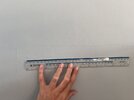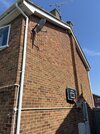My son’s room has just been redecorated and previously he had a lot of fine cracks in the plaster on the external facing wall. They’d appeared gradually over about 5 years and were vertical and horizontal. The decorator filled them and repainted two weeks ago. Then one warm evening after he’d finished, some of the cracks reappeared. The next morning I could barely see them again, and decided it was because the room was cooler. Now again this evening, after it being a warm day, those same cracks are really visible again.
I’m presuming the original cracks are expanding and contracting with the change in temperature, meaning the filler didn’t actually do the trick at all. Can anyone advise what might be the root cause and whether it’s actually possibly to fill cracks permanently that are appearing and disappearing in this way? Thank you
I’m presuming the original cracks are expanding and contracting with the change in temperature, meaning the filler didn’t actually do the trick at all. Can anyone advise what might be the root cause and whether it’s actually possibly to fill cracks permanently that are appearing and disappearing in this way? Thank you








